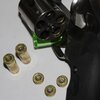Mr_Flintstone
Member
Had my first case head separation today on some .357 magnum. Three cases separated the same way.

The load was 8.0 gr Bullseye under a 125 gr XTP from a Henry rifle. Funny thing was that these cases all passed the paper clip test before the last loading. They’ve all had that funny ring around the bottom since I fired the factory Federal 158 gr sjhp. Been loaded about 10 times.

The load was 8.0 gr Bullseye under a 125 gr XTP from a Henry rifle. Funny thing was that these cases all passed the paper clip test before the last loading. They’ve all had that funny ring around the bottom since I fired the factory Federal 158 gr sjhp. Been loaded about 10 times.


